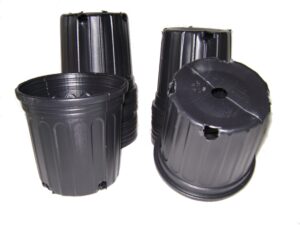
Introduction:
Countertops are more than just functional surfaces; they are integral elements of interior design that can enhance the aesthetics and functionality of any kitchen or bathroom. However, with a myriad of materials available in the market, ranging from natural stone to engineered composites, identifying the type of countertop material can be a daunting task for many homeowners. In this comprehensive guide, we will unravel the mysteries of countertop identification, providing you with the knowledge and tools needed to discern the materials used in your countertops accurately.
I. Understanding Countertop Materials
A. Importance of Countertop
Identification Determining the type of countertop material is crucial for several reasons. Firstly, it allows homeowners to implement appropriate cleaning and maintenance practices tailored to the specific characteristics of the material, thereby prolonging its lifespan and preserving its aesthetic appeal. Additionally, knowledge of countertop materials facilitates informed decision-making during renovation or remodeling projects, ensuring compatibility with existing fixtures and appliances.
B. Overview of Common Countertop Materials
Countertops are available in a diverse array of materials, each possessing unique properties and characteristics. From the timeless elegance of natural stone to the modern versatility of engineered composites, the choice of countertop material can significantly impact the overall look and feel of a space. Understanding the distinct attributes of each material is essential for selecting the option that best suits your aesthetic preferences, budgetary constraints, and lifestyle requirements.
C. Factors Influencing Material
Selection Several factors influence the selection of countertop materials, including durability, maintenance requirements, cost, and design aesthetics. While natural stone countertops exude luxury and sophistication, they may require periodic sealing and maintenance to prevent staining and etching. On the other hand, engineered stone countertops offer enhanced durability and resistance to stains and scratches, making them ideal for high-traffic areas. Laminate countertops provide a budget-friendly alternative with a wide range of colors and patterns, making them popular choices for cost-conscious homeowners.
II. Characteristics of Different Countertop Materials
A. Natural Stone Countertops
- Granite Granite countertops are renowned for their durability, heat resistance, and natural beauty. With a wide range of colors and patterns to choose from, granite adds a touch of elegance to any kitchen or bathroom.
- Marble Marble countertops exude timeless elegance and sophistication, with distinctive veining patterns that make each slab unique. However, marble is softer and more porous than granite, making it susceptible to scratching and staining.
- Quartzite Quartzite countertops combine the natural beauty of marble with the durability of granite, making them an increasingly popular choice among homeowners. With its stunning veining patterns and exceptional hardness, quartzite offers a luxurious yet practical option for countertops.
B. Engineered Stone Countertops
- Quartz Quartz countertops are engineered from natural quartz crystals and resin, resulting in a non-porous surface that is resistant to stains, scratches, and heat. Available in a wide range of colors and patterns, quartz offers versatility and durability for modern kitchens and bathrooms.
- Solid Surface Solid surface countertops are composed of synthetic materials such as acrylic or polyester resins, providing a seamless and hygienic surface that is easy to clean and maintain. Solid surface countertops are available in a variety of colors and can be seamlessly integrated with sinks and backsplashes for a cohesive look.
- Porcelain Porcelain countertops offer the ultimate combination of durability, versatility, and aesthetic appeal. With its ultra-compact surface and exceptional resistance to scratches, stains, and heat, porcelain is an ideal choice for both indoor and outdoor applications. Available in a wide range of colors and textures, porcelain countertops offer endless design possibilities for homeowners.
C. Laminate Countertops
- High-Pressure Laminate High-pressure laminate countertops consist of multiple layers of paper impregnated with resin and bonded under high pressure. Known for their affordability and wide range of colors and patterns, high-pressure laminate countertops are a popular choice for budget-conscious homeowners.
- Low-Pressure Laminate Low-pressure laminate countertops are composed of a single layer of decorative paper bonded to a substrate, resulting in a more budget-friendly option with limited durability. While low-pressure laminate countertops may not offer the same level of performance as high-pressure laminate or natural stone, they are still a viable choice for certain applications.
- Textured Laminate Textured laminate countertops feature surface finishes that mimic the look and feel of natural materials such as wood, stone, or concrete. With their realistic appearance and durable construction, textured laminate countertops offer a cost-effective alternative to natural stone or engineered surfaces.
III. Visual and Physical Inspection Techniques
A. Examination of Surface Texture
One of the primary methods for identifying countertop materials is by examining the surface texture. Natural stone countertops typically have a smooth, polished surface, while laminate countertops may exhibit a slightly textured or matte finish. Engineered stone countertops often feature a consistent texture that mimics the appearance of natural stone, while solid surface countertops have a smooth and uniform surface without visible pores or seams.
B. Assessment of Color and Veining Patterns
Color and veining patterns can also provide valuable clues about the type of countertop material. Granite countertops typically feature intricate veining patterns and specks of various colors, ranging from earthy browns and grays to vibrant blues and greens. Marble countertops, on the other hand, often exhibit bold veining patterns and a range of hues from white and gray to pink and green. Engineered stone countertops offer more uniform coloration and veining patterns, with options to mimic the look of natural stone or create custom designs. Laminate countertops come in a wide range of colors and patterns, including realistic reproductions of natural materials such as wood, stone, and metal.
C. Inspection for Seams, Joints, and Edges Examining
the seams, joints, and edges of the countertop can also provide valuable insights into the type of material used. Natural stone countertops typically have visible seams and joints where individual slabs are joined together, while engineered stone and solid surface countertops can be seamlessly integrated with inconspicuous seams. Laminate countertops often feature prominent edge profiles, such as bullnose or beveled edges, which can help distinguish them from other materials.
IV. Testing Methods for Countertop Identification
A. Acid Test
The acid test involves applying a small amount of lemon juice or vinegar to an inconspicuous area of the countertop and observing the reaction. Natural stone countertops, such as marble and limestone, are susceptible to etching and discoloration when exposed to acidic substances, while engineered stone and laminate countertops are typically resistant to acid damage.
B. Scratch Test
The scratch test involves using a sharp object, such as a knife or key, to scratch the surface of the countertop in an inconspicuous area. Natural stone countertops, such as granite and quartzite, are highly scratch-resistant, while softer materials like marble and laminate may exhibit visible scratches. Engineered stone countertops, such as quartz, are also highly scratch-resistant and may only show minor surface scratches under extreme pressure.
C. Burn Test
The burn test involves using a lighter or match to apply heat to an inconspicuous area of the countertop and observing the reaction. Natural stone countertops, such as granite and quartzite, are highly heat-resistant and will not be damaged by direct exposure to flame. Engineered stone countertops, such as quartz, are also heat-resistant but may be damaged by prolonged exposure to high temperatures. Laminate countertops are susceptible to heat damage and may discolor or warp when exposed to flames.
V. Conclusion: Empowering Homeowners
In conclusion, identifying the type of countertop material is essential for homeowners seeking to maintain, repair, or remodel their kitchens and bathrooms. By understanding the characteristics and properties of different countertop materials, homeowners can make informed decisions regarding cleaning, maintenance, and design choices. Whether it’s the timeless elegance of natural stone, the modern versatility of engineered composites, or the budget-friendly appeal of laminate, knowing what kind of countertop you have allows you to implement the right cleaning and maintenance practices, preserving its appearance and longevity. Additionally, familiarity with countertop materials enables homeowners to confidently navigate renovation projects, ensuring compatibility with existing fixtures and appliances. By empowering homeowners with the knowledge and tools needed to identify countertop materials accurately, this guide seeks to enhance the enjoyment and longevity of kitchen and bathroom spaces for years to come.






